- Nuclear reactor zones
- Sandstone
- Uranium ore layer
- Granite
A natural nuclear fission reactor is a uranium deposit where self-sustaining nuclear chain reactions occur. The conditions under which a natural nuclear reactor could exist had been predicted in 1956 by Paul Kuroda. The remnants of an extinct or fossil nuclear fission reactor, where self-sustaining nuclear reactions have occurred in the past, can be verified by analysis of isotope ratios of uranium and of the fission products (and the stable daughter nuclides of those fission products). An example of this phenomenon was discovered in 1972 in Oklo, Gabon by Francis Perrin under conditions very similar to Kuroda's predictions.
Oklo is the only location where this phenomenon is known to have occurred, and consists of 16 sites with patches of centimeter-sized ore layers. Here self-sustaining nuclear fission reactions are thought to have taken place approximately 1.7 billion years ago, during the Statherian period of the Paleoproterozoic, and continued for a few hundred thousand years, probably averaging less than 100 kW of thermal power during that time.
History
In May 1972 at the Tricastin uranium enrichment site at Pierrelatte in France, routine mass spectrometry comparing UF6 samples from the Oklo Mine, located in Gabon, showed a discrepancy in the amount of the 235
U
isotope. Normally the concentration is 0.72% while these samples had
only 0.60%, a significant difference (some 17% less U-235 was contained
in the samples than expected).
This discrepancy required explanation, as all civilian uranium
handling facilities must meticulously account for all fissionable
isotopes to ensure that none are diverted to the construction of nuclear weapons. Furthermore since fissile material is why people mine uranium, a significant amount "going missing" was also of direct economic concern.
Thus the French Commissariat à l'énergie atomique (CEA) began an investigation. A series of measurements of the relative abundances of the two most significant isotopes of the uranium
mined at Oklo showed anomalous results compared to those obtained for
uranium from other mines. Further investigations into this uranium
deposit discovered uranium ore with a 235
U
concentration as low as 0.44% (almost 40% below the normal value).
Subsequent examination of isotopes of fission products such as neodymium and ruthenium also showed anomalies, as described in more detail below. However, the trace radioisotope 234
U did not deviate significantly in its concentration from other natural samples. Both depleted uranium and reprocessed uranium will usually have 234
U concentrations significantly different from the secular equilibrium of 55 ppm 234
U relative to 238
U. This is due to 234
U being enriched together with 235
U and due to it being both consumed by neutron capture and produced from 235
U by fast neutron induced (n,2n) reactions in nuclear reactors. In Oklo any possible deviation of 234
U concentration present at the time the reactor was active would have long since decayed away. 236
U must have also been present in higher than usual ratios during the time the reactor was operating, but due to its half life of 2.348×107 years being almost two orders of magnitude shorter than the time elapsed since the reactor operated, it has decayed to roughly 1.4×10−22 its original value and thus basically nothing and below any abilities of current equipment to detect.
This loss in 235
U
is exactly what happens in a nuclear reactor. A possible explanation
was that the uranium ore had operated as a natural fission reactor in
the distant geological past. Other observations led to the same
conclusion, and on 25 September 1972 the CEA announced their finding
that self-sustaining nuclear chain reactions had occurred on Earth about
2 billion years ago. Later, other natural nuclear fission reactors were
discovered in the region.
Fission product isotope signatures
U
which had been subjected to thermal neutrons.
Neodymium
Neodymium
and other elements were found with isotopic compositions different from
what is usually found on Earth. For example, Oklo contained less than
6% of the 142
Nd
isotope while natural neodymium contains 27%; however Oklo contained more of the 143
Nd
isotope. Subtracting the natural isotopic Nd abundance from the
Oklo-Nd, the isotopic composition matched that produced by the fission
of 235
U
.
Ruthenium
U
which had been subjected to thermal neutrons. The 100
Mo
(an extremely long-lived double beta emitter) has not had time to decay to 100
Ru
in more than trace quantities over the time since the reactors stopped working.
Similar investigations into the isotopic ratios of ruthenium at Oklo found a much higher 99
Ru
concentration than otherwise naturally occurring (27–30% vs. 12.7%). This anomaly could be explained by the decay of 99
Tc
to 99
Ru
. In the bar chart the normal natural isotope signature of ruthenium is compared with that for fission product ruthenium which is the result of the fission of 235
U
with thermal neutrons. It is clear that the fission ruthenium has a different isotope signature. The level of 100
Ru
in the fission product mixture is low because fission produces neutron rich isotopes which subsequently beta decay and 100
Ru
would only be produced in appreciable quantities by double beta decay of the very long-lived (half life 7.1×1018 years) molybdenum isotope 100
Mo. On the timescale of when the reactors were in operation, very little (about 0.17 ppb) decay to 100
Ru
will have occurred. Other pathways of 100
Ru production like neutron capture in 99
Ru or 99
Tc (quickly followed by beta decay) can only have occurred during high neutron flux and thus ceased when the fission chain reaction stopped.
Mechanism
The natural nuclear reactor formed when a uranium-rich mineral deposit became inundated with groundwater, which could act as a moderator for the neutrons produced by nuclear fission. A chain reaction took place, producing heat that caused the groundwater to boil away; without a moderator that could slow the neutrons, however, the reaction slowed or stopped. The reactor thus had a negative void coefficient of reactivity, something employed as a safety mechanism in human-made light water reactors. After cooling of the mineral deposit, the water returned, and the reaction restarted, completing a full cycle every 3 hours. The fission reaction cycles continued for hundreds of thousands of years and ended when the ever-decreasing fissile materials, coupled with the build-up of neutron poisons, no longer could sustain a chain reaction.
Fission of uranium normally produces five known isotopes of the fission-product gas xenon; all five have been found trapped in the remnants of the natural reactor, in varying concentrations. The concentrations of xenon isotopes, found trapped in mineral formations 2 billion years later, make it possible to calculate the specific time intervals of reactor operation: approximately 30 minutes of criticality followed by 2 hours and 30 minutes of cooling down (exponentially decreasing residual decay heat) to complete a 3-hour cycle. Xenon-135 is the strongest known neutron poison. However, it is not produced directly in appreciable amounts but rather as a decay product of Iodine-135 (or one of its parent nuclides). Xenon-135 itself is unstable and decays to Caesium-135 if not allowed to absorb neutrons. While Caesium-135 is relatively long lived, all Caesium-135 produced by the Oklo reactor has since decayed further to stable Barium-135. Meanwhile Xenon-136, the product of neutron capture in Xenon-135 only decays extremely slowly via double beta decay and thus scientists were able to determine the neutronics of this reactor by calculations based on those isotope ratios almost two billion years after it stopped fissioning uranium.
A key factor that made the reaction possible was that, at the time the reactor went critical 1.7 billion years ago, the fissile isotope 235
U
made up about 3.1% of the natural uranium, which is comparable to the
amount used in some of today's reactors. (The remaining 96.9% was
non-fissile 238
U
and roughly 55 ppm 234
U.) Because 235
U
has a shorter half-life than 238
U
, and thus decays more rapidly, the current abundance of 235
U
in natural uranium is only 0.72%. A natural nuclear reactor is therefore no longer possible on Earth without heavy water or graphite.
The Oklo uranium ore deposits are the only known sites in which natural nuclear reactors existed. Other rich uranium ore bodies would also have had sufficient uranium to support nuclear reactions at that time, but the combination of uranium, water and physical conditions needed to support the chain reaction was unique, as far as is currently known, to the Oklo ore bodies. It is also possible, that other natural nuclear fission reactors were once operating but have since been geologically disturbed so much as to be unrecognizable, possibly even "diluting" the uranium so far that the isotope ratio would no longer serve as a "fingerprint". Only a small part of the continental crust and no part of the oceanic crust reaches the age of the deposits at Oklo or an age during which isotope ratios of natural uranium would have allowed a self sustaining chain reaction with water as a moderator.
Another factor which probably contributed to the start of the
Oklo natural nuclear reactor at 2 billion years, rather than earlier,
was the increasing oxygen content in the Earth's atmosphere. Uranium is naturally present in the rocks of the earth, and the abundance of fissile 235
U
was at least 3% or higher at all times prior to reactor startup. Uranium is soluble in water only in the presence of oxygen.
Therefore, increasing oxygen levels during the aging of the Earth may
have allowed uranium to be dissolved and transported with groundwater to
places where a high enough concentration could accumulate to form rich
uranium ore bodies. Without the new aerobic environment available on
Earth at the time, these concentrations probably could not have taken
place.
It is estimated that nuclear reactions in the uranium in centimeter- to meter-sized veins consumed about five tons of 235
U
and elevated temperatures to a few hundred degrees Celsius.
Most of the non-volatile fission products and actinides have only moved
centimeters in the veins during the last 2 billion years. Studies have suggested this as a useful natural analogue for nuclear waste disposal. The overall mass defect from the fission of five tons of 235
U
is about 4.6 kilograms (10 lb). Over its lifetime the reactor produced
roughly 100 megatonnes of TNT (420 PJ) in thermal energy, including neutrinos.
If one ignores fission of plutonium (which makes up roughly a third of
fission events over the course of normal burnup in modern humanmade light water reactors), then fission product yields amount to roughly 129 kilograms (284 lb) of Technetium-99 (since decayed to Ruthenium-99) 108 kilograms (238 lb) of Zirconium-93 (since decayed to Niobium-93),
198 kilograms (437 lb) of Caesium-135 (since decayed to Barium-135,
but the real value is probably lower as its parent nuclide, Xenon-135,
is a strong neutron poison and will have absorbed neutrons before
decaying to Cs-135 in some cases), 28 kilograms (62 lb) of Palladium-107 (since decayed to Silver), 86 kilograms (190 lb) of Strontium-90 (long since decayed to Zirconium) and 185 kilograms (408 lb) of Caesium-137 (long since decayed to Barium).
Relation to the atomic fine-structure constant
The natural reactor of Oklo has been used to check if the atomic fine-structure constant
α might have changed over the past 2 billion years. That is because α
influences the rate of various nuclear reactions. For example, 149
Sm
captures a neutron to become 150
Sm
, and since the rate of neutron capture depends on the value of α, the ratio of the two samarium isotopes in samples from Oklo can be used to calculate the value of α from 2 billion years ago.
Several studies have analysed the relative concentrations of radioactive isotopes left behind at Oklo, and most have concluded that nuclear reactions then were much the same as they are today, which implies α was the same too.

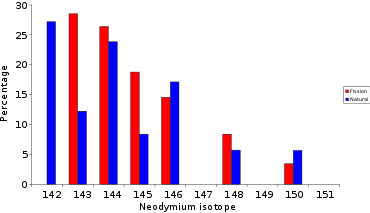

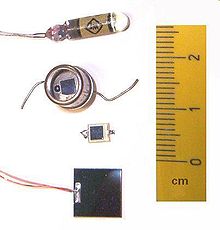

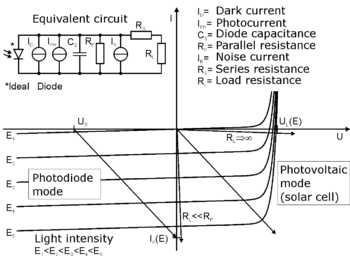







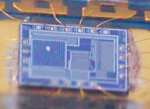





























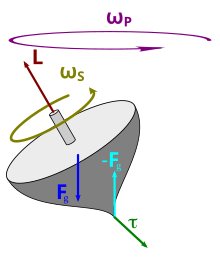




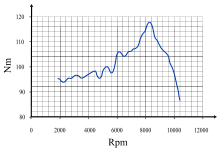








![{\displaystyle \left[\mathbf {F} \,\mathrm {d} {\boldsymbol {\theta }}\,\mathbf {r} \right]}](https://wikimedia.org/api/rest_v1/media/math/render/svg/2a3689ca28aa6ebcf841de77f0e15c61380ddcfe)
![{\displaystyle \left[\mathbf {F} \,\mathrm {d} {\boldsymbol {\theta }}\,\mathbf {r} \right]=\mathbf {r} \times \mathbf {F} \cdot \mathrm {d} {\boldsymbol {\theta }}}](https://wikimedia.org/api/rest_v1/media/math/render/svg/6cab3500ce62d8ce0cdf1464a35d2a54ef7b4ca6)











![{\displaystyle {\begin{aligned}{\text{power}}&={\frac {{\text{force}}\cdot {\text{linear distance}}}{\text{time}}}\\[6pt]&={\frac {\left({\dfrac {\text{torque}}{r}}\right)\cdot (r\cdot {\text{angular speed}}\cdot t)}{t}}\\[6pt]&={\text{torque}}\cdot {\text{angular speed}}.\end{aligned}}}](https://wikimedia.org/api/rest_v1/media/math/render/svg/4382d186e4085de735546ad46847d852af843fcb)

![{\displaystyle {\begin{aligned}{\text{power}}&={\text{torque}}\cdot 2\pi \cdot {\text{rotational speed}}\cdot {\frac {{\text{ft}}{\cdot }{\text{lbf}}}{\text{min}}}\cdot {\frac {\text{horsepower}}{33,000\cdot {\frac {{\text{ft}}\cdot {\text{lbf}}}{\text{min}}}}}\\[6pt]&\approx {\frac {{\text{torque}}\cdot {\text{RPM}}}{5,252}}\end{aligned}}}](https://wikimedia.org/api/rest_v1/media/math/render/svg/71f6394786e06bd8fb53a08ea0161897cf0ed9f9)



